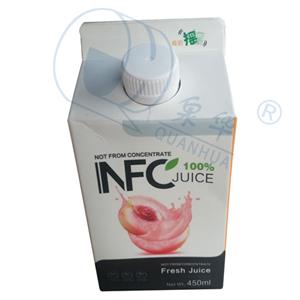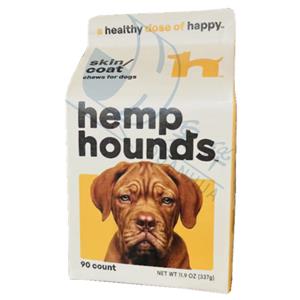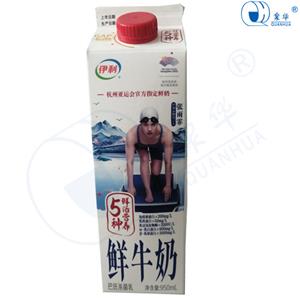As consumers ' preference for environmentally friendly packaging increases, considering that paper-based packaging performs well in reducing plastic pollution, more and more brands and manufacturers have begun to turn to paper-based packaging.
Traditional paper-based materials usually have the problem of insufficient barrier properties, such as strong permeability to water, oxygen and other gases, which limits their application in some demanding beverage packaging. In order to solve this problem, the introduction of barrier materials has become a key part of improving the functionality and market competitiveness of beverage paper-based packaging. Traditional barrier materials include polyethylene ( PE ), polypropylene ( PP ), etc., which can effectively prevent the penetration of moisture and oxygen, extend the shelf life of products, and ensure product quality and taste. However, this kind of barrier material is still mainly plastic material, which is very difficult to recycle and sustainable. Therefore, the upstream and downstream industries are more inclined to the development and application of new environmental protection materials.
At present, a variety of new barrier materials have appeared on the market. They not only have excellent moisture resistance and barrier properties, but also can improve the market competitiveness of products while maintaining the overall environmental protection of packaging. For example, emerging materials such as biodegradable plastics, waterborne coatings and nanotechnology modified materials can improve the functionality of beverage paper-based packaging while maintaining its degradability and recyclability, which meets the needs of modern consumers for environmentally friendly packaging. Among them, the development of waterborne environmentally friendly barrier emulsions is particularly rapid. Due to its convenient production process, high cost performance, and the advantages of recycling and sustainability, it has achieved more than twice the growth in the past two years, from food packaging to industry and more subdivided market applications. Further development, mainly based on waterborne acrylic emulsions.
According to the data of PTS and related institutions, the average repulping rate of water-based acrylic barrier materials in paper-based applications is more than 90 %, which can achieve good recycling and solve the problem that traditional PE coated paper products cannot be recycled. At the same time, according to the relevant research data, from the perspective of full life cycle carbon footprint, water-based acrylic coating has a significant advantage in carbon reduction in the whole value chain compared with traditional PE coated paper cups. When the functional unit is set to 1000 paper cups, the carbon emission of 8-ounce PE coated paper cups ( from cradle to grave ) is 24.77 kg CO2e. The carbon emission of waterborne acrylic coated paper cup is 21.92 kg CO2e. Expand the research boundaryConsidering the recovery and regeneration, the recycled pulp produced per 1000 paper cups can reduce an additional 2.45 kg CO2e. Therefore, considering the whole value chain, the carbon emission per 1000 water-based acrylic coated paper cups will actually be 19.47 kg CO2e.
Therefore, compared with PE coated paper cups, the carbon content of 5.3 kg CO2e was reduced, and the decrease reached 21.4 %, which was equivalent to the carbon sequestration of one tree for half a year. By analogy, the total amount of carbon reduction produced by 36226 water-based acrylic coated paper cups is roughly equivalent to planting a 20-year-old towering tree.
Other new environmentally friendly materials include the gradual development of polyhydroxyalkanoates ( PHA ) and bio-based polyesters ( PEF ). PHA has been developed to the level of the third and fourth generation, which relatively solves the problems of hydrolysis and odor of the material. After the development and accumulation of the past five years, many enterprises at home and abroad have realized the industrialization landing and the cooperation and promotion of upstream and downstream in paper-based materials. However, the development of PHA materials in paper-based materials still faces the problem of production efficiency. Compared with the traditional casting process, the fastest PHA casting speed in the world is 50-80 m / min, while the highest speed of PE casting is more than 300 m / min, and even the speed of polylactic acid ( PLA ) is 100-150 m / min. Therefore, how to optimize the material application process and even develop more mature paper-based application products is still the direction that PHA, PEF and other production and research enterprises need to work hard.
Multifunctional barrier materials can not only cope with various environmental conditions, but also achieve greater flexibility and cost-effectiveness in packaging design and production processes. The application of new barrier materials in beverage paper-based packaging will continue to develop in a more efficient and environmentally friendly direction. Technological innovation will focus on improving the barrier properties of materials, reducing the use of raw materials, reducing production energy consumption, and improving the degradability and recyclability of materials.




